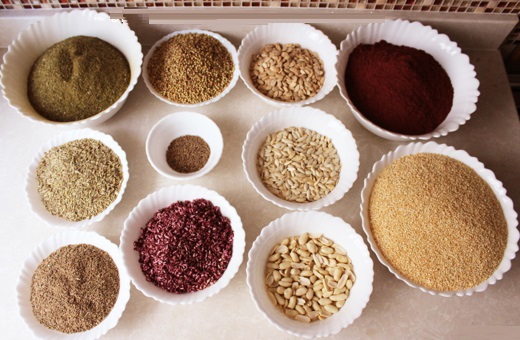Za’atar(Zaah-tar) is an arabic word and it refers to herb spice mixture. It is also the name of a spice mixture typically used as a condiment, which contains the herb along with toasted sesame seeds, dried sumac, and often salt, as well as other spices, as a combine of related Middle Eastern herbs, it contains plants from the genera Origanum (oregano), Calamintha (basil thyme), Thymus.
Aleppo is the famous city of Za’atar, one of the most important of any Syrian cuisine.
Za’atar has a different element from other neighboring countries. It is is wonderful mixture of crushed spices and roasted nuts mixed with sumac and toasted sesame seeds. The blend of ingredients varies from one spice dealer to another.
Za’atar Halabi is usually prepared in September, and because it is widely available commercially people do not bother making it at home. In Aleppo, people used to buy Za’atar from Al-Madina Souq.
Za’atar Halabi is always a part of Syrian breakfast table.
Za’atar is traditionally dried in the sun and mixed with salt, sesame seeds and sumac. It is commonly eaten with pita, which is dipped in olive oil and then za’atar.When the dried herb is moistened with olive oil, the spread is known as za’atar-wu-zayt or zeit ou za’atar (zeit or zayt, meaning “oil” in Arabic and “olive”). This mixture spread on a dough base and baked as a bread, produces manakeesh bi zaatar.
The fresh za’atar herb is used in a number of dishes. Borek is a common bread pastry that can be stuffed with various ingredients, including za’atar.A salad made of fresh za’atar leaves (Arabic: salatet al-zaatar al-akhdar) is also popular throughout the Levant. The recipe is simple, consisting of fresh thyme, finely chopped onions, garlic, lemon juice, olive oil and salt.
it is a traditional beverage by boiling za’atar with water to make a useful and healthy herbal tea.
Hamsa Zoghib

